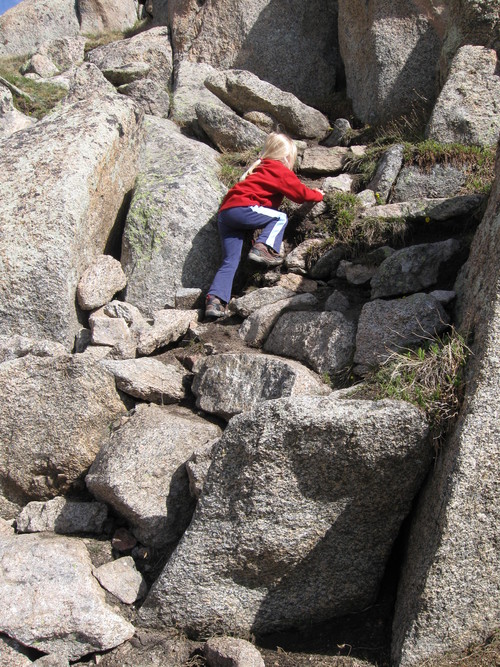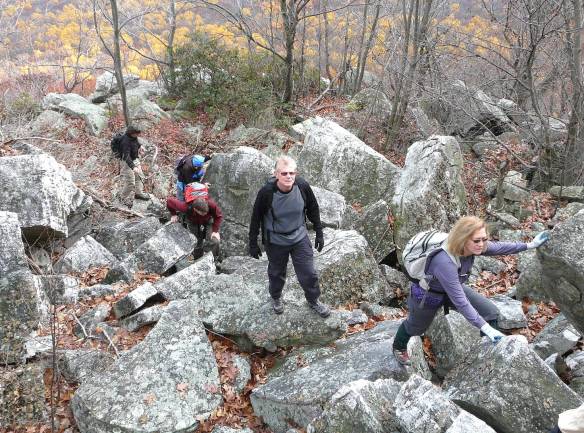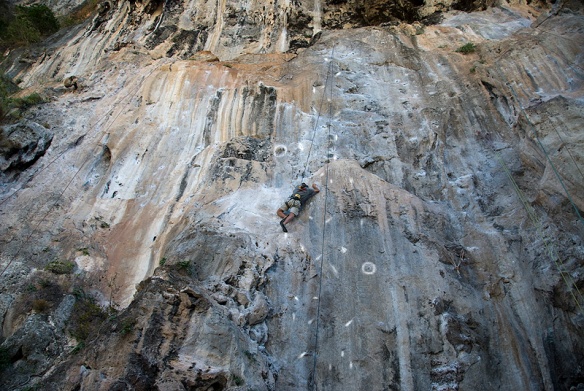If you’re like me, you’ve more often than not had to explain to “non-climbers” what rock climbing really is. People frequently have an image in their minds, and it roughly looks like this:
We call this, “scrambling.”
Scrambling does not rock climbing make. Trying to explain the idea of climbing a vertical rock wall under your own power, using the rope only as a way to not die should you fall is rocket science to your average office worker. Though we have fantastic resources for the layperson out there (think Vertical Limit, Cliffhanger), most folks in the real world have no concept of what we do. A family member once asked me about why I go out to a local ‘crag’ almost every weekend, asking “how many times can you climb the same mountain, don’t you get bored?” I mentioned that there were over 200 routes at that “mountain”, and I haven’t even done half yet. I said: some are too easy so I skip them. Some are too hard, so I’m trying to get strong enough to do them. Some are low quality, zero star routes that aren’t worth doing. Some are “R” rated and I’m working up the courage and beta to get through them. And some, are yet to be discovered.
This is the look I got:
For the love of God, don’t ever, under any circumstances, try to explain what bouldering is. Hell, even I don’t understand it…. Find a rock, sometimes less than 10 feet tall… try to get to the top. No, not the easy way up: find the most difficult way up. No, don’t start trying to climb standing up, get as low as possible with your ass hovering inches off the ground. Good. Now fall 50 times, shred your skin, bleed, curse.. and if the temperature and humidity are just right, you’ll get to the top. Down? Take the easy way down..
So what is rock climbing… How do you explain what working a route is? How do you explain how the human body can stay glued to a rock wall with only a toe and a few fingertips crimped on edges the width of a book cover? How do you explain to your Mom how gnarly your fall was on that 5.11 splitter because you ripped half your pro, flipped upside down, and cracked your helmet, only to try again 30 minutes later?
You don’t.
Don’t tell your Mom anything! In fact, don’t try to explain climbing to anyone who doesn’t climb. There are only two possibilities: Either they’ll think you scramble around on 3rd class terrain with Vibram FiveFingers on your feet. Or worse, they’ll think you’re planning to one day climb Mt. Everest. There is no middle ground, and in both those scenerios, you’re a giant pussy.
The next time you’re at a family dinner, and everyone starts asking about your “rock climbing” hobby, just whip out a few photos like this and say, “it really helps me become ‘one’ with nature”:




